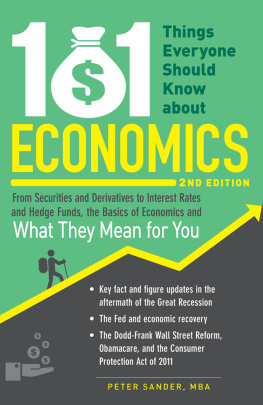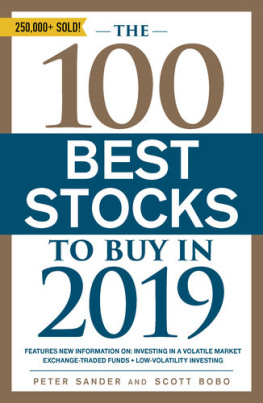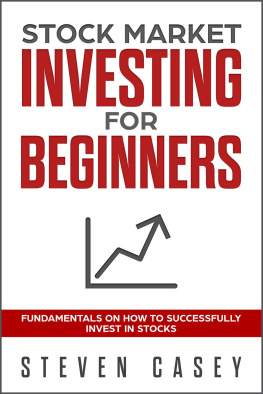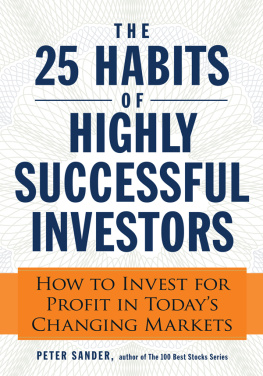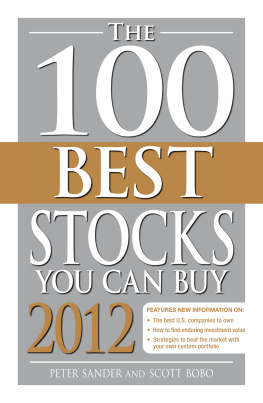Thank you for downloading this Simon & Schuster ebook.
Get a FREE ebook when you join our mailing list. Plus, get updates on new releases, deals, recommended reads, and more from Simon & Schuster. Click below to sign up and see terms and conditions.
CLICK HERE TO SIGN UP
Already a subscriber? Provide your email again so we can register this ebook and send you more of what you like to read. You will continue to receive exclusive offers in your inbox.
We hope you enjoyed reading this Simon & Schuster ebook.
Get a FREE ebook when you join our mailing list. Plus, get updates on new releases, deals, recommended reads, and more from Simon & Schuster. Click below to sign up and see terms and conditions.
CLICK HERE TO SIGN UP
Already a subscriber? Provide your email again so we can register this ebook and send you more of what you like to read. You will continue to receive exclusive offers in your inbox.

Adams Media
An Imprint of Simon & Schuster, Inc.
57 Littlefield Street
Avon, Massachusetts 02322
www.SimonandSchuster.com
Copyright 2017 by Simon & Schuster, Inc.
All rights reserved, including the right to reproduce this book or portions thereof in any form whatsoever. For information address Adams Media Subsidiary Rights Department, 1230 Avenue of the Americas, New York, NY 10020.
First Adams Media trade paperback edition DECEMBER 2017
ADAMS MEDIA and colophon are trademarks of Simon and Schuster.
For information about special discounts for bulk purchases, please contact Simon & Schuster Special Sales at 1-866-506-1949 or .
The Simon & Schuster Speakers Bureau can bring authors to your live event. For more information or to book an event contact the Simon & Schuster Speakers Bureau at 1-866-248-3049 or visit our website at www.simonspeakers.com.
Interior design by Katrina Machado
Cover design by Sylvia McArdle
Library of Congress Cataloging-in-Publication Data has been applied for.
ISBN 978-1-5072-0432-0
ISBN 978-1-5072-0433-7 (ebook)
Many of the designations used by manufacturers and sellers to distinguish their products are claimed as trademarks. Where those designations appear in this book and Simon & Schuster, Inc., was aware of a trademark claim, the designations have been printed with initial capital letters.
PART I
THE ART AND SCIENCE OF INVESTING IN STOCKS
By Peter Sander
The Art and Science of Investing in Stocks
We lost.
Yes, for the first time in eight proud runs starting with the 2010 edition of The 100 Best Stocks , we failed to send our old nemesisthe S&P 500 Indexhome empty to await for yet another shot.
Instead of the annual win to which weve grown accustomed, we ate dust. The S&P, aided by a surprising November Trump victory at the head of the 2017 stretch, caught up and then passed us at the finish line. It won by about two lengths, a 16.4 percent year-over-year gain during our April 1 to April 1 measurement year compared to a 14.2 percent gain for our 100 Best list.
We arent used to seeing that horseor very many othersin front of us.
As this opening section unfolds, well get to the details. Youll see how we lost and how much we lost by. Youll also see that we finished far from last. Our 14.2 percent year-over-year gain (including dividends) is hardly a reason to send us to the glue factory. You could say that we still finished easily in the money. Yes, it fell short of the S&Ps rather stunning 16.4 percent, but we think our horse did pretty well the past few years; moreover, it is ready to run again. And oh by the way, it should do better on the sloppy track of a down market if one should ever materialize.
Yes, if one should ever materialize. Our publisher switched horses in late 2009 to bring us on as authors of the 100 Best series for the 2010 edition. At that time, of course, there were buying opportunities galore. But no one, including us, ever thought the markets would rise without faltering for eight years in a row! Even with the S&P rising some 225 percent over that period (our 100 Best Stocks rose 310 percent over the same period by the way, as shows), we thought there would be at least a few down years. A few years where we could test the strength of our list against a down market; a sloppy track.
Hasnt happened. Not yet anyway. But were still betting that if such a down year happens, youll still cash your ticket if you stick with us.
***
With that, the three dominant reasons for our 2.2 percent return shortfall deserve a little explaining, so here goes:
First off, a surprisingly faster horse picked the 2017 race to come into its own. As we play a bit conservative, we avoid many of the truly glamorous legs on the S&P horse such as Facebook, Netflix, and Google. In doing so, we think were more likely to win most of the races against the S&P. Just not all of them, as this year clearly demonstrated. The so-called FANG stocks (Facebook, Amazon, Netflix, Google) were up 30 percent for 2017 (through the end of May) while the S&P 500 index in total was up only 8 percent for the same five-month period. We have only one of the four customary FANGs on the 100 Best list: Amazonalthough if you expand just a little, FANG becomes FAANG with the inclusion of Apple, and we have that one too. All that said, we may be slower than FANG but think were better positioned to win in the long run.
The unexpected Trump Bump did much to break our streak too. Say and feel what you will about the Trump administration, theres no doubt the surprise summiting of the nations presidency gave the markets a late kick for the 2016 calendar year and beyond into 2017. Upon his election the markets overall rose 16 percent in three months (as measured by the S&P 500); that rising tide should have floated our boats higher too, and indeed it did. Where we ran into a little bit of a headwind is in regards to which boats it floated.
The Trump agenda is full of items that benefit business. Some of them, like the advance of US manufacturing and jobs and lowering corporate taxes, positively affect most or all firms in todays business landscape. But some of them, such as less regulation or changed taxation for repatriated foreign profits, affect some industries more than others: in particular, financial and tech firms. Financial and tech firms, demonstrated in , became the number one and number two performers among the 39 mutual fund sector benchmarks as reported by Lipper.
Heres the problem. Were especially light on financial stocks. As many of you who have followed us know, we dont have a very big appetite for financial companies. Why? Because frankly we dont really understand them. They are extraordinarily complex, and their presentation of facts and figures to investors doesnt go very far to make them any easier to understand. We buy businesses we can understand.
Beyond that, we dont think financial firms, in aggregate, add much value to the economy. They make their money taking crumbs off large sums of money moved around from one place to another (a metaphor used brilliantly in Tom Wolfes 1987 observant book The Bonfire of the Vanities , a highly recommended read). Much of what they do is a zero-sum game; if they make money on a financial transaction, someone else loses. Were oversimplifying here, but when financial companies comprise some 22 percent of the nations total corporate profits as they did just prior to the 2008 meltdown, look out below. When the financials horse took off in the wake of the 2016 election, largely due to the prospects of throwing off hobbling regulation, (which is a little scary too), we ate some dust.





